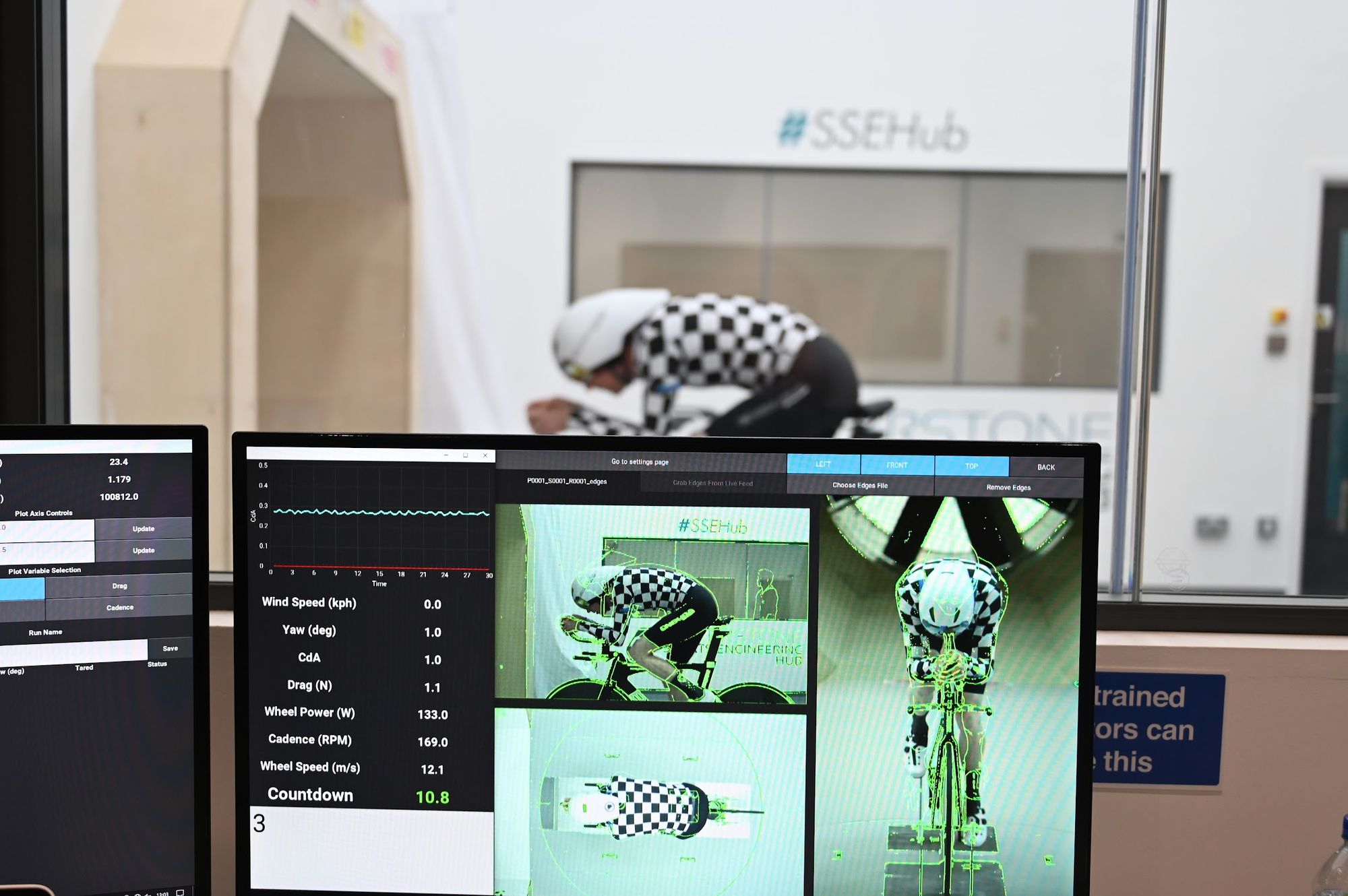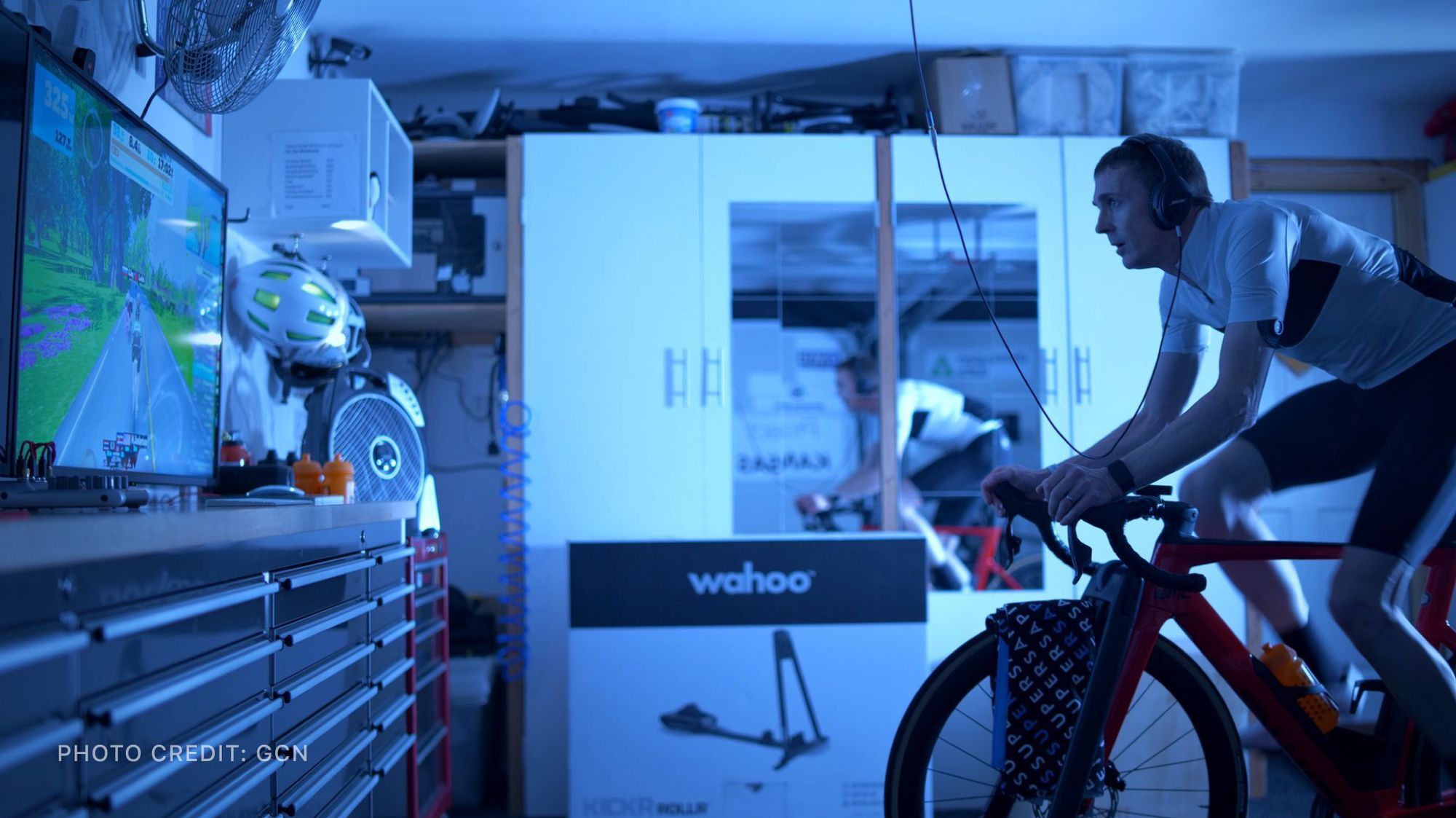Whether we go from couch to 5k or sprint triathlon to Ironman, the beauty of sport is its ability to show us we can do more than we may have previously thought. Just Google James Macdonald’s cycling accomplishments and no doubt you’ll be super impressed by the ultra-cyclist. But everyone is on a journey. You. Me. James and all his competitors. It’s just that, sometimes, we only see tiny slivers–or just the finish line–of an entire, complicated journey.
We spoke to James about all of his accomplishments, including Race Across America, where participants must ride 3000 miles across 12 states, and the records he holds for Land’s End to John o’ Groats and back. We also discussed his unsuccessful attempt at the 24-hour track distance record.
But before we get to all of that, we wanted to start at the beginning: What drove James to take on these inspiring excursions in the first place?
James’ answer? One part of his strategy in surviving is to normalize the excursions. Which includes normalizing what most people consider crazy and unachievable. This mentality serves him particularly well when he’s in a multi-day event with several remaining days. Thinking this feat is way outside of normal behavior would lead you to believe it’s impossible to complete it, and contribute to your own defeatist attitude.
But here’s where it gets good: After giving us that answer during our conversation, James followed back up in email to say he wasn’t entirely forthcoming with that answer.
There was more to add about where he gets his mental strength.
“My wife and I endured the agony of stillbirth 17 years ago with our first daughter. We vowed to learn from this experience. It took us a while, but as I said to her, when you have lived the worst day of your life already, then suddenly there isn’t much to be afraid of anymore. So, after some time getting used to the sadness and pain that followed, I found the courage to try things I’d never thought possible. It takes courage to tell people you will ride across a continent and that their (considerable) money will not go to waste. There have been some dark, desperate times doing ultra-rides, some with the team and many alone. But when that happens, I remember how short a time we are here on this earth, and just get back on with it.”
It’s one thing to be courageous in riding 3,000 miles. It’s another to be vulnerable and share your pain in a way that others can understand the full, complicated story. And that’s why we love – and are so inspired by – James.
How It Started
Going all the way back to the beginning: James grew up racing at an amateur club level in the United Kingdom. But as his career took off in his late twenties, sports took a back seat. Ten or so years later, the company he was working for was sponsoring Land’s End to John o’ Groats (roughly 850 miles/1267 kilometers). The event is a well-established route for cyclists, runners, and walkers going from the southernmost to the northernmost part of the UK. His boss asked him to do it. James told his boss it was too far and suggested maybe he could ride one or two days instead, because nine days in a row just seemed impossible. Eventually, something made him change his mind, and he obliged to do the entire course, Land’s End to John o’ Groats. He got stronger each day, which was incredible as his colleagues continued to get understandably more tired. For the next three years, he did the event. Eventually, that long distance he once saw as too far just became a normal distance he did every year.
When an acquaintance was looking for subjects to run physiological tests on, they chose James, and his results revealed that James was within the top 1% of people in the world for parameters like VO2max and power output. Unbeknownst to him, he possessed this natural ability to go the distance. Thinking back to his childhood, James jokes he always wondered why it took other kids like him so long to complete races, and why they were always complaining and exhausted at the finish line.
Not wanting to waste this previously unknown talent, James decided to see how far he could take it. That led him to Race Across America in 2016. He also returned to Land’s End to John o’ Groats, but this time, he set the record for riding it there and back faster than anyone has ever done it. He covered 2711 kilometers in 5 days, 18 hours, and 3 minutes.

How It Went
At this point, there seemed to be no stopping James. He set out to break the 24-hour track distance record for an indoor velodrome. The record is held by Christoph Strasser (941.872km).
Unfortunately, the attempt ended after he slipped on water he’d spilled on the track earlier. The crash happened eight hours into the event. He carried on for six more valiant hours, but the bruising from the fall caused severe pain in his arms and further discomfort in his back and neck.
He stopped just short of 15 hours. Of his mentality in that moment, James said:
“Initially, after stopping, the first thing I felt was relief. Then the disappointment set in. Then within a day, I decided I wanted to do it again.”
After all, remember what he said in that email:
“When you have lived the worst day of your life already, then suddenly there isn’t much to be afraid of anymore.”
With an excellent support team around him, James is planning every event and utilizing every bit of technology available to him. And as we know, nutrition is one of the most significant factors in being successful in making more progress and leveling up performance.
Since the event happens on an indoor track, conditions remain the same for the most part. That meant James and his team could work out exactly what he needed: 400 milliliters per hour of energy drink to avoid stopping for a toilet break. Five hundred milliliters, and he will need to stop and waste precious time and lose distance.
Working out nutritional strategies before using Supersapiens was trial and error. James would do fasted rides and go to the point of bonking, then start eating until he felt good again and measured how much he ate.
Supersapiens has given him visibility, helping him and his team meticulously track, tinker, and perfect his glucose. James saw improvements in glucose stability, glucose score, and more importantly performance, increasing the frequency and reducing the amount of his nutritional intake without changing total amounts.
This led to a key realization: breaking his aerodynamic position more frequently is better for performance because nutrition is such a key factor.

Now he keeps his glucose ranges stable and avoids the peaks and troughs. He’s also used pre-loading to his benefit, looking at his glucose exposure at the end of the day to know if he has eaten enough for upcoming big rides.
James is more conscious now of bumping up his trailing average glucose by 10mg/dL for 24 – 48 hours prior to key days. He says his glucose exposure on the app is an easy way to check if he’s eaten enough. He hasn’t lost any weight in bumping it up and figures it means he’s been replenishing glycogen stores.
Another behavioral change: Fueling hours before an afternoon ride instead of 15 minutes before and forgoing the experience of an energy crash immediately.
How It Progresses
James has rescheduled the 24-hour attempt for September this year. He’s going for it again. And his inspiration this time for when the going gets incredibly tough? His best friend and crew chief.
“I lost him last year to cancer. He was an outstanding person, the sort you want with you if you are ever shipwrecked. (That’s my benchmark of the best kind of person: Would you want to be stranded with them?) This 24-hour record attempt is for him, because he always said I was the toughest person – mentally – that he’d ever met. And given that he’d grown up in the deprived estates of the east end of Glasgow, that’s saying something. So I would never want to prove him wrong.”
We are excited for James' attempt and look forward to continuing to help him learn and progress, as he has helped us.
